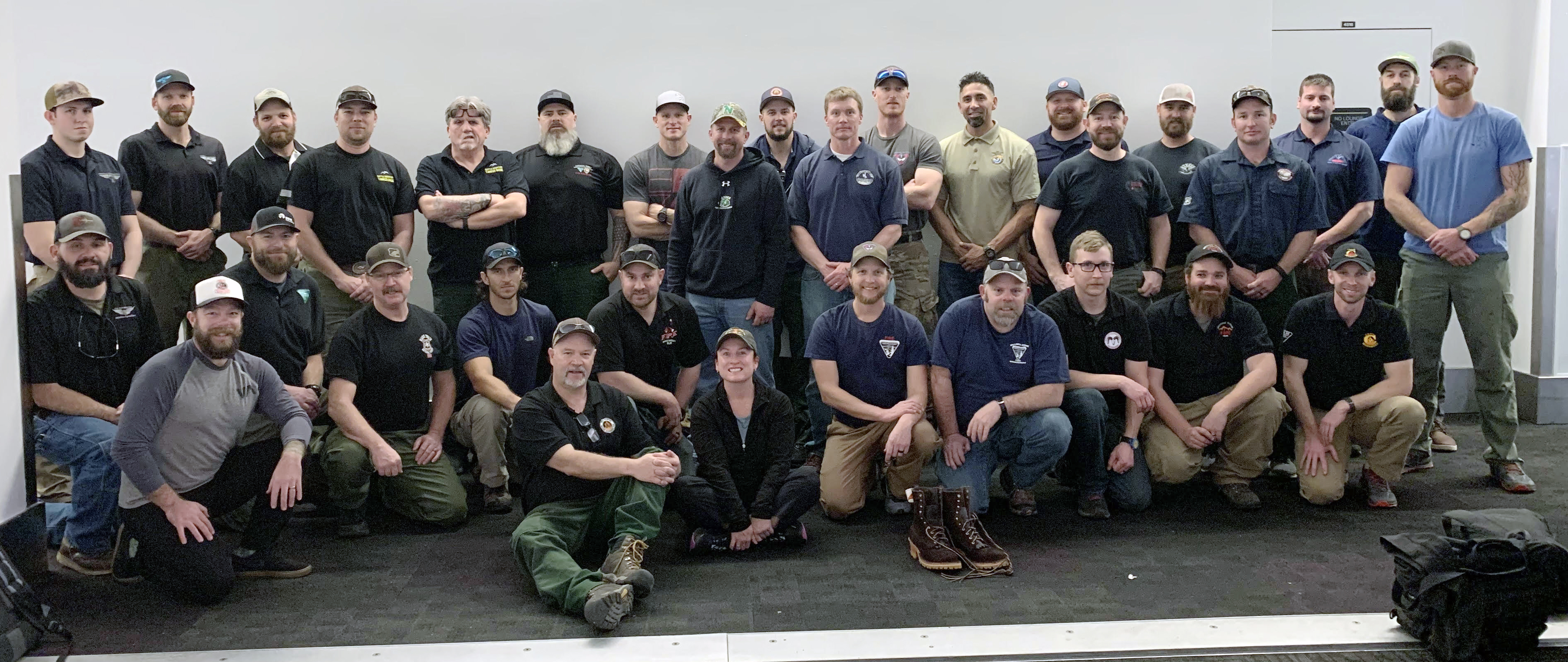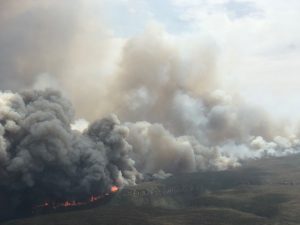Boise, Idaho – As wildfires continue to burn in Australia, the United States is sending additional U.S. Department of the Interior (DOI) and U.S. Forest Service (USFS) wildfire personnel to assist with ongoing bushfire suppression efforts in Australia. Three 10-person Incident Management Teams and a group consisting of air support personnel have arrived in Australia in recent days.
A BLM Fire crew and 11 single resource overhead personnel get ready to fly to Australia from Los Angeles. These firefighters were so grateful to be given the opportunity to go to Australia and help with their wildfires. Several of them had worked with the Australians when they were mobilized to the United States to help us and were eager to repay the favor.
Additionally, two 20-person hand crews will be travelling to Australia today, January 22. These crews are a combination of DOI and USFS firefighters from throughout the United States. The U.S. has already deployed more than 200 USFS and DOI wildland fire staff to the Australian Bushfire response.
“Recent rains have been a welcome relief to fire crews and communities across Australia, but have not extinguished the risk, “said Stuart Ellis, Australasian Fire and Emergency Service Authorities Council (AFAC) CEO. “We are grateful for the arrival of US fire task force personnel this week. Australia is a large country, and while we have seen generous rain fall in the past few days in some areas, we are still experiencing kilometers of active fire front and a large clean-up ahead of us. We’re halfway through the summer and there are still challenges ahead for us this season.”
U.S. Forest Service Fire Director Shawna Legarza recently returned from Australia in support of the bushfire response. “The large, landscape-scale devastation is unprecedented in terms of its impact on Australian economy, its people and their communities, and the effect to numerous ecosystems and habitats. It was humbling to observe the Australians’ resilience, the response in Australia, and level of support from our agency. We will continue to learn from each other in this complex fire environment.”
Based on requests from AFAC, USFS and DOI wildland fire personnel have been deployed and will continue to provide assistance as requested through the existing agreement. The U.S. firefighters are filling critical wildfire and aviation management roles in New South Wales and Victoria.
“Though recent rain has helped the situation, Australia is only halfway through their summer season and they’re still dealing with unprecedented fire suppression efforts. This recent group of crews will assist with on-the-ground fire suppression, in addition to personnel who’ve been filling fire management roles. DOI will continue to help our Australian partners in any way we can,” said DOI Director of the Office of Wildland Fire Jeff Rupert.
The U.S., Australia and New Zealand have been exchanging fire assistance for more than 15 years. The most recent exchange occurred in August of 2018, when 138 Australian and New Zealand wildfire management personnel were sent to the U.S. for almost 30 days to assist with wildfire suppression efforts in Northern California and the Northwest. The Australian and New Zealand personnel filled critical needs during the peak of the western fire season for mid-level fireline management, heavy equipment, helicopter operations, and structure protection. The last time the U.S sent firefighters to Australia was in 2010.
###
The National Interagency Fire Center (NIFC), located in Boise, Idaho, is the nation’s support center for wildland firefighting. Eight different agencies and organizations are part of NIFC including, the Bureau of Land Management, Bureau of Indian Affairs, U.S. Fish and Wildlife Service, National Park Service, U.S. Forest Service, National Weather Service, U.S. Fire Administration, and the National Association of State Foresters.
Australasian Fire and Emergency Service Authorities Council (AFAC):
AFAC is the National Council for Fire and Emergency Services (NRSC) in Australia and New Zealand, a not-for-profit organization that comprises of 31 members.
AFAC facilitates resource sharing of firefighters, specialists and aircraft, enabling the national and where required, international response to large scale emergency events.
AFAC delivers firefighting resources through the AFAC National Resource Sharing Centre and aircraft contracted through the National Aerial Firefighting Centre.
The AFAC NRSC coordinates and facilitates international and interstate deployments through its established partnerships and arrangements as authorized by the Commissioners and Chief Officers Strategic Committee.
Emergency management in Australia is a state and territory responsibility, not federal. When the capacity of state-based resources are stretched, responding agencies can request reinforcements through the AFAC NRSC.
The AFAC NRSC effectively acts as a funnel, collecting resources from across the country and channeling these to the requesting jurisdiction. In this way, those states in need are only required to focus on where they intend to deploy the interstate resources, not where they come from. (This is very similar to how NIFC functions.)
Where domestic agencies cannot meet resource requests, the AFAC NRSC reaches out to New Zealand, Canada and the United States. Long standing agreements and the use of similar incident command systems ensure effective interoperability between Australian, North American and New Zealand personnel.”
AFAC represents a network of almost 300,000 career and volunteer emergency service personnel.
Photos of Australia can be found here: https://www.flickr.com/photos/165415395@N07/albums/72157712575980226




